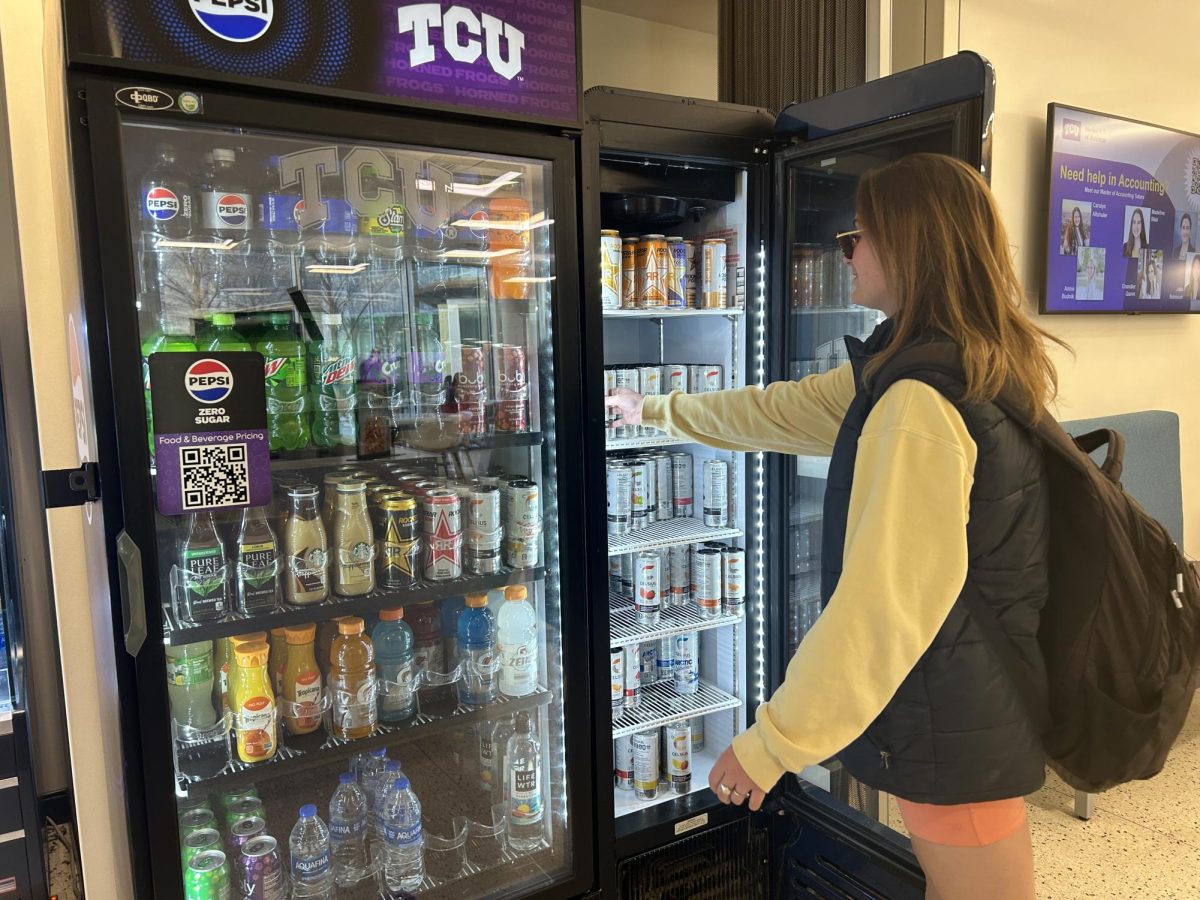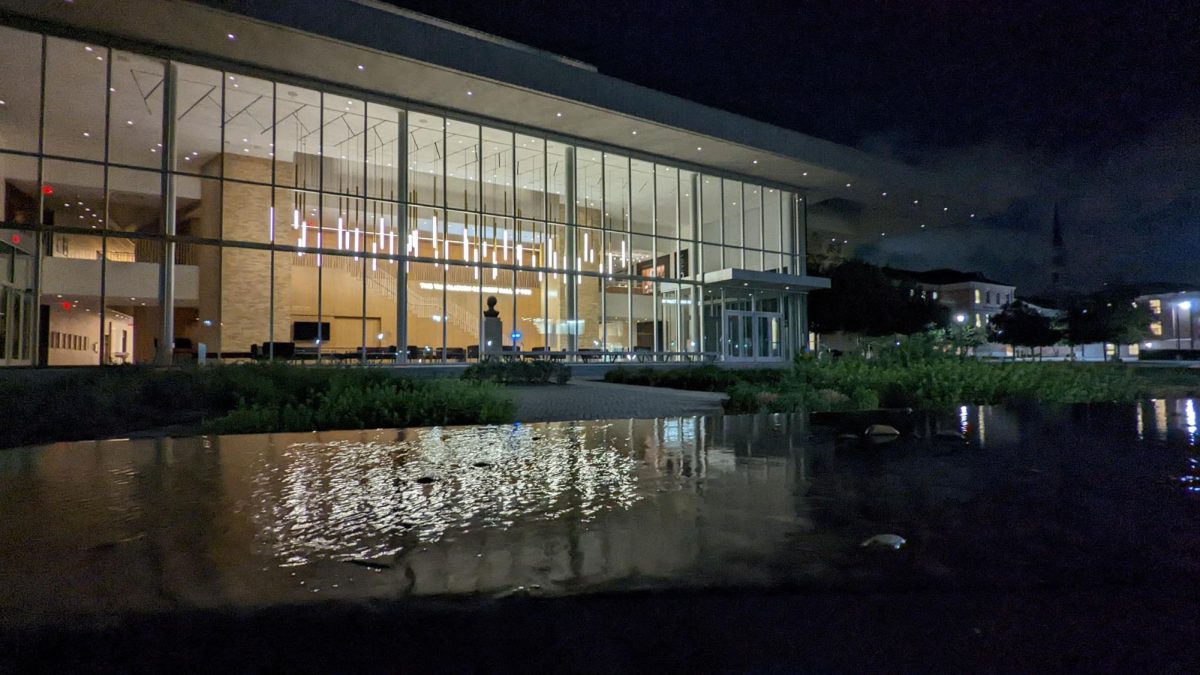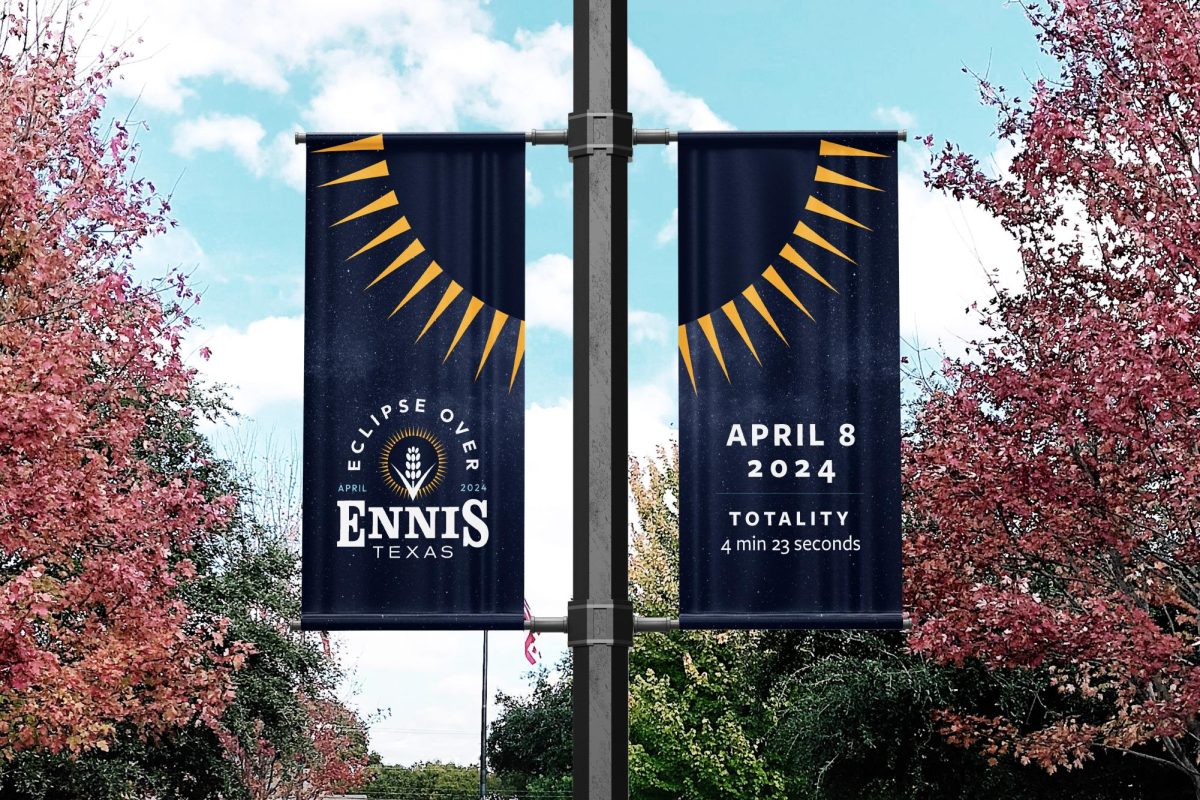Filing in one by the one, students enter the classroom, which immediately fills with noise.
“Silencio,” calls out Spanish teacher Lourdes Nedrelow as she directs the attention of her students to the chalkboard. Once she has gained their attention, the students begin to recite in Spanish the names of Spanish-speaking countries as Nedrelow points to their names in English.
“Bien,” she says as each country’s name is identified correctly. Nedrelow makes it a point to speak only Spanish to her students, a new concept she has applied in her first year teaching at the school.
A typical high school Spanish class? No. These students are fifth graders at St. Andrew Catholic School, 3304 Dryden Road in the 109.
At a grade level in which students are finally mastering the concept of fractions and division, the students at St. Andrew reach the fifth grade and will have already been learning to read, write, and speak Spanish for the past five years. That is already six years more experience than the majority of high school students who are required to take at least two years of a foreign language in high school in order to graduate.
With a foreign language program implemented before most of its students are able to tie their shoelaces, St. Andrew is on a mission to make each of its students not only bilingual, but also globally aware.
Experienced-based Spanish
Nedrelow’s Spanish curriculum is experience-based. Depending on the grade level, on any given day the curriculum might involve students engaging in full Spanish dialogue as they speak into fake cell phones. This activity, Nedrelow said, helps the students incorporate what they are learning in class with familiar scenarios from their daily life.
It is here that students learn and perform traditional Spanish folk songs like “De Colores,” while also getting a geography lesson of the countries that speak the language they are learning. Nedrelow said the students have been using an interactive computer program through the Smithsonian Institute that has enhanced their hands-on experience. Not one day goes by that is the exactly the same, and that is just the way the students like it.
Jonathon Cao, a fifth grader at St. Andrew, said his favorite part of Nedrelow’s class is her use of PowerPoint presentations.
Rose Hall, development director for St. Andrew, describes Nedrelow’s class, which runs from pre-k to eighth grade, as a program that both engages and enriches the mind. With students meeting either once or twice a week, Nedrelow said she makes sure to use every second that she is given with her students.
Nedrelow, who was raised in a bilingual home, said before taking the job at St. Andrew she did not have reservations about whether or not she would be able to engage her prepubescent students. She only hoped that she would be able to pass on her own excitement and passion for the Spanish language, she said.
“As long as the teacher is engaged and excited about whatever it is your teaching, the kids are going to be excited about it,” Nedrelow said.
Hall credits Nedrelow’s enthusiasm and her love of the Spanish language and culture for making a big difference in the students’ excitement about learning.
“Lourdes just came in this year, and it’s a delight to see the children so excited to go to Spanish class,” Hall said.
Younger children learn languages best
Hall said the decision to begin offering St. Andrew’s students a foreign language as early as the pre-k level makes the school one of the few in the area to do so. After past studies revealed that a child’s ability to learn a language is higher the younger in age the child is, the decision was a no-brainer, she said.
Scott Williams, director of the Language Media Center at Texas Christian University, said the amount of time it takes for an individual to reach a general, superior level of proficiency in another language (this includes reading, writing, speaking and listening) is quite large. Therefore it is best to start early when a child’s brain is wired to learn language, he said.
While St. Andrew remains focused on offering its students an immense amount of opportunities, the school has tried to take into consideration the idea of quality over quantity. A case in point is the foreign language program.
Hall said up until last year, along with Spanish, St. Andrew offered German, Latin, and French to its eighth grade students. This setup, however, only allowed students one semester of class time for each language.
Hall said while students were getting a taste of these languages before entering high school, they were not mastering them. The school decided the best solution would be to focus on the language that would provide their students the most benefits, she said.
“Because we live in Texas, we felt it was better academically to be stronger in Spanish,” Hall said.
Despite St. Andrew’s central focus on the Spanish language, Hall said, she hopes that the school will eventually be able to reintroduce other languages again in a way that enables students to fully grasp the curriculum.
Nedrelow is quick to point out that her class involves much more than just teaching her students another language. She also incorporates opportunities within the curriculum for students to learn about the cultures of the countries that speak Spanish.
Sharing culture and traditions
From Hispanic Heritage Month and Cinco de Mayo to Dia de los Muertos, the Day of the Dead, Nedrelow’s students are immersed in culture so that they may gain a better understanding of the Hispanic population as a whole. Nedrelow said activities like these are among her favorite things about her class. She said she gets pleasure out of sharing traditions that she herself celebrated while growing up.
Drawing again on her own experiences, Nedrelow said she often incorporates items and pictures from her own travels to some of the countries studied to give her students a visual hands-on perspective of what they might see if they lived there.
Megan Griffin, a fifth grader at St. Andrew, said she enjoys being able to learn about how other countries cultures and the ways in which their people interact.
Nedrelow said examining the cultures of other countries has helped her students realize that as much as society focuses on the differences of others, there are also many characteristics that cultures share with each other that are either the same or quite similar.
Hall said despite the feeling some people have that everyone in the United States should know English, it is important for students to realize that they live in a global society.
“Especially in Texas, where there is a huge predominance of Hispanics, Spanish is the No. 1 language in the United States to be learned right now,” Hall said.
With 32 percent of St. Andrew’s student population made up of minorities, Hall said Nedrelow’s class gives students an opportunity to better understand their fellow classmates that might not consider English their first language.
Lily Bermudez, a fifth grader at St. Andrew’s, learned to speak Spanish before she did English. As one of only a handful of students who came into school already bilingual, Lily said she enjoys being able to help her fellow classmates out when it comes to translating some of their assignments.
“It’s fun to help the other kids learn Spanish and to translate what the teacher says for them,” Bermudez said.
Native speakers help classmates
Nedrelow said she enjoys seeing her native-speaking students, who often in the beginning of the semester are timid to admit they know Spanish, feel like an asset to their peers. She said rather than being made to feel like knowing a foreign language is a bad thing, they are made to feel it is an advantage.
Williams said it is not just about accepting everything about any given culture, but more about understanding other cultures.
“Americans seem to have a really hard time thinking outside our borders, and by borders I don’t just mean the geographic ones,” he said.
Williams said he hopes one day that the need to learn another language becomes general, regardless of which language. He also anticipates the day when the American culture accepts learning another language as a norm, so that then the shear diversity of interests among students will lead to a wide variety of languages being studied.
Nedrelow, who can also read and write in Spanish, is adamant when talking about the importance of children learning a second language.
“It’s opened up so many employment opportunities for me,” she said.
Opening up to a different culture
Nedrelow said the process of learning the Spanish language has also allowed her students the opportunity to open themselves up to a different culture than their own, which in turn has opened them up to the world. She said foreign language programs like the one at St. Andrew help to instill an open mind in students as well as a compassion for differences in others.
“We are all humans, we are all the same,” Nedrelow said.
Nedrelow’s students seem to agree as well that what they are learning in her class will help them in their current lives and futures.
Mikey Marshall, a fifth grader at St. Andrew, said learning a foreign language is beneficial in helping a person understand others.
“You can use it with people who don’t understand English when you are at restaurants or other places,” Marshall said.
Cao said learning Spanish will help later on when he gets a job so that he can communicate with everyone in his work place. Griffin agrees.
“If I work at a restaurant and people are speaking Spanish I can know what they are saying,” she said.
Bermudez, who is already bilingual, said she realizes the importance this will have as she grows up.
“It’s important because as I get older because I’ll meet people who speak only Spanish and that way I can help them out,” Bermudez said.
Williams said the importance of learning a second language also lies in the fact that it is an absolute myth that everyone knows how to speak English. He said even when people in other countries speak English, even then English-only speakers are utterly dependent on what they want you to know.
Hall said she would suggest to schools who are considering expanding their foreign language programs to go ahead and take that step include earlier grade levels.
She said students are given the best opportunity to learn a language in a way that they can actually comprehend when they are introduced to the curriculum at an earlier age.
“I would say that is something in your budget that you really need to look at instead of some of the other things you might be doing,” Hall said.
In three more years, Nedrelow’s fifth grade class will enter high school, then soon after that, college. She said she hopes by then she will have equipped the students with the tools they need to be globally aware and to succeed in a world that has become a melting pot of individuals.





